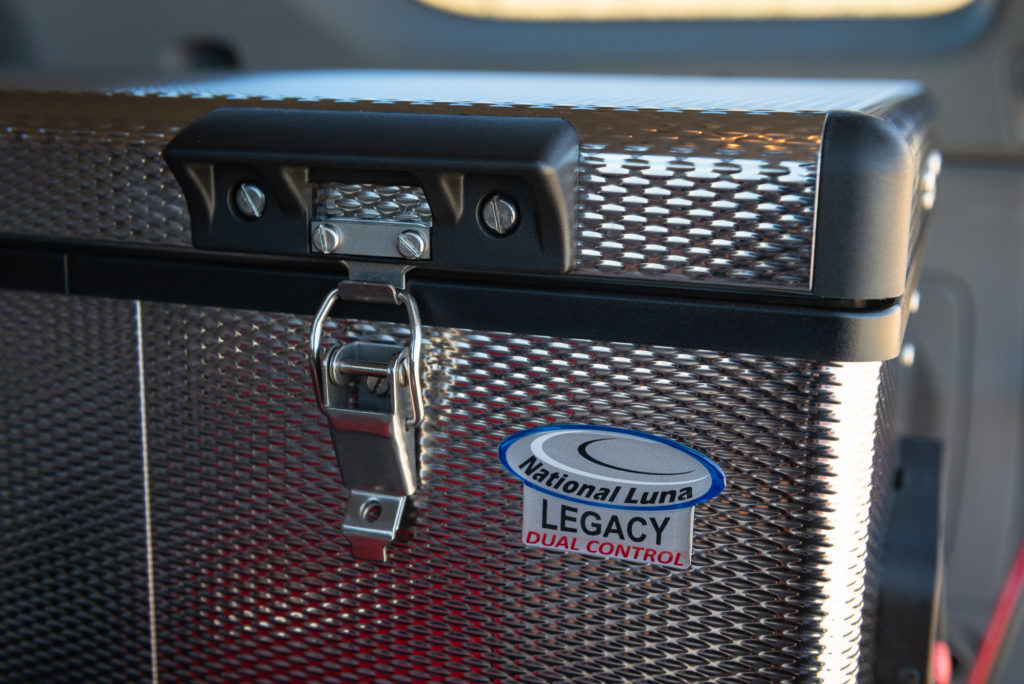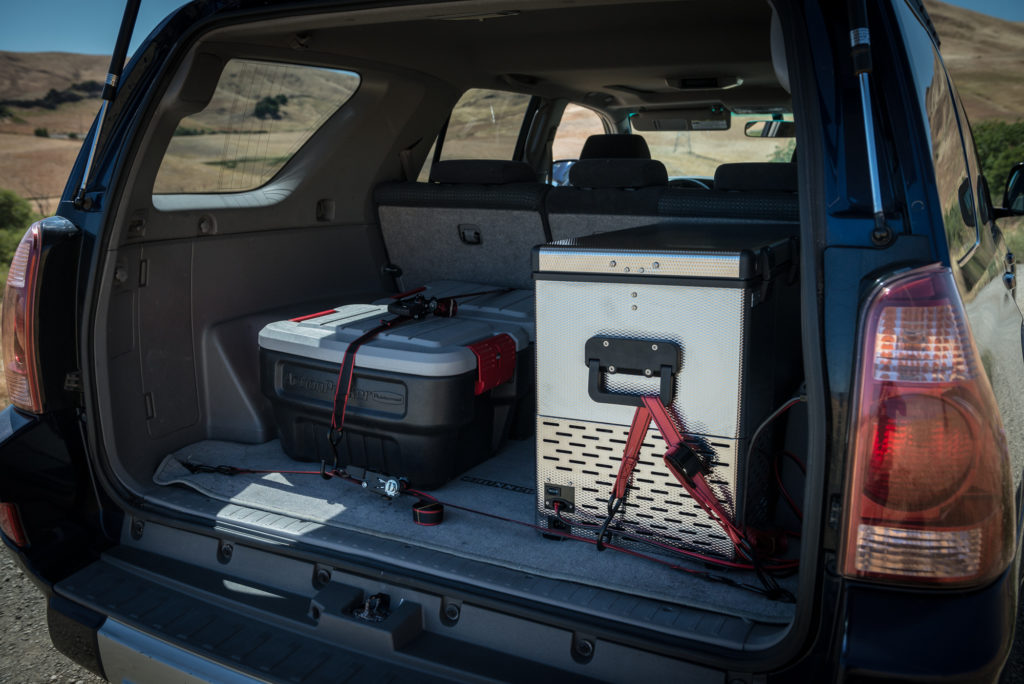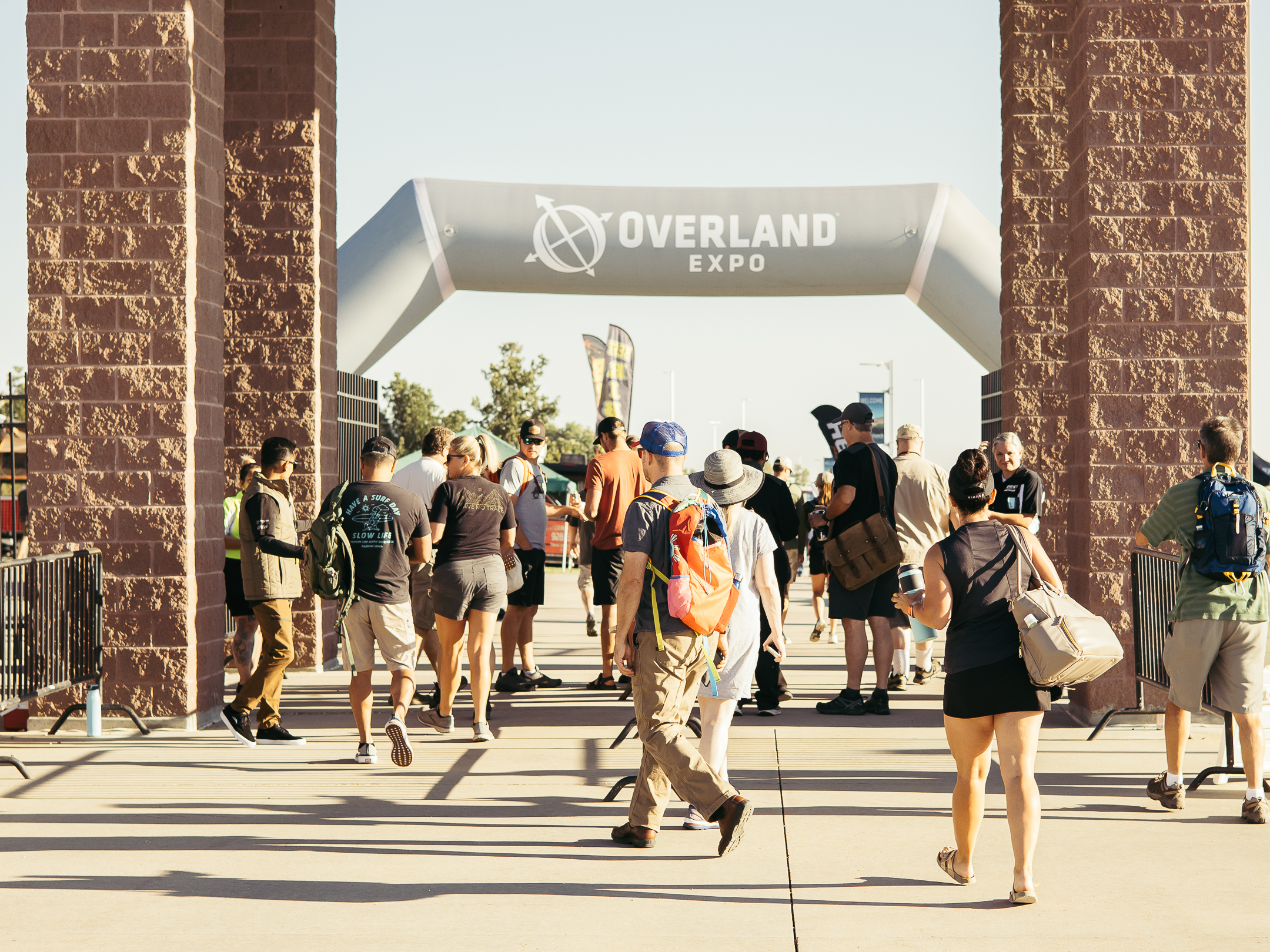Quick take: National Luna’s Legacy line of fridge/freezers has earned its reputation as a durable, efficient, top-tier choice for an overlanding fridge. However, it lacks some of the new connectivity found on its competitors.
Confession: I’m that guy. I stubbornly held onto my Igloo cooler for way too long … long after my overland buddies all got off-road refrigerators. I always needed to stop and get ice whenever we left the trail to go into town.
I was that guy with the water-logged food, drinks that were just a bit too warm, and the telltale mud spatter around my ankles from emptying the melted ice out of my cooler at camp (a no-no, by the way).
Several years ago, however, I had my ‘road to Damascus’ moment. A buddy of mine brought his fridge on a long-distance trip we did together. Not surprisingly, everything was the temperature it was supposed to be. It was a convenience that I hadn’t appreciated.
Now a fridge is a luxury I rarely leave home without. When it’s not in my vehicle, my overlanding fridge makes a great drink cooler for the shop. I’m a convert.




In the intervening years since that first trip liberated from an ice chest, I’ve had the opportunity to travel with a number of off-road-oriented 12-volt fridges. I’ve geeked out with the best of them, looking at compressor specs, insulation thicknesses, discussed aesthetics and build materials and formed more than a few opinions about them.
There was one fridge that I had always wanted to try for myself, but never managed to, despite them being in several friend’s vehicles: the National Luna. Maybe it’s the bona fides of being developed in Africa to transport life-saving medicines. Maybe it’s the utilitarian design. Or maybe it’s just that I’ve seen so many of them used on the epic overland trips (some I’ve dreamed of taking) that put National Luna products at top of mind for me.
When “The Compass” staff started looking at fridges for our review series, I leapt at the chance to spend some quality time with the National Luna to see if it lived up to its reputation.
History
The National Luna fridge was originally designed in 1990 in response to a World Health Organization (WHO) call to develop a medical refrigerator to transport vaccine supplies across Africa. Of all the companies that submitted designs to the WHO, only the National Luna design passed all of the performance requirements.
When the commission dried up, National Luna turned to producing 12-volt fridges for the overland industry. For the last 30 years, the units have been crisscrossing the Earth continuing to keep both medical supplies and margaritas cold.
With the Legacy line, National Luna needs to not only live up to its reputation and history, but also compete with a broad field of new competitors.
Performance
Truthfully, there are a lot of good 12-volt fridges to choose from these days. You can’t walk more than a hundred feet among the vendors at an Overland Expo without running into one. There are ones with great insulation, but energy guzzling compressors, there are ones with poor insulation, but incredibly efficient compressors. Yet, there are only a handful that have both great insulation and an energy efficient compressor. The Legacy seems to hit that sweet spot with both.
The compressor was designed in-house by National Luna to replace the Danfoss compressors used in previous models. The manufacturer doesn’t publish energy efficiency data, but the unit has historically scored very well when tested against other 12-volt refrigerators.
Rather than using sheet or molded insulation, these fridges use a high-density injection molding that effectively creates continuous insulation around the entire body. Coupled with a polished, dimpled stainless steel skin that reflects a fair bit of heat from the outside (and occasionally blinds you in the process), and you have a very efficient envelope that doesn’t need to take advantage of that compressor very often, once the initial temperatures are reached.
For much of the review, I decided to temp fate and use an older battery at the end of its lifespan for most of my time with the fridge. I set the fridge to the 10.4 volt cut-out just in case, grabbed my jumper pack, and threw caution to the wind (kinda).
Once the two zones were down to temperature, I rarely heard the compressor fire up. While at camp I kept anxiously checking to see if the fridge had sucked the battery dry. Thankfully, I never had a problem. Moving forward, I wouldn’t think twice about leaving it going on a fresh absorbent glass mat (AGM) battery for several days at camp (but I would still have a contingency plan in place).
Using it
I reviewed the 50-liter model – the sweet spot when it comes to size. It’s big enough to pack enough food for two people for the better part of a week, provided you aren’t packing tomahawk steaks for each night. It isn’t so enormous though that you can’t get the lid open in a mid-sized vehicle. That said, if size isn’t an issue for your vehicle or you are planning to pack a side of beef, National Luna offers a 110-liter dual zone version that tips the scales at 86.9 pounds and a massive 33 x 20 x 28 inches of internal volume.
The 50-liter comes with three food baskets – two for the larger 38.3-liter “left” compartment and one for the smaller 1.1-liter “right” compartment that sits over the compressor. The baskets make it easy to get to whatever you have packed, avoiding having to dig to the bottom to get to the things that got packed first.
The National Luna offers something that few of its competitors do: true independent control of the two cooling zones. This is notable because you don’t have one zone’s cooling influencing the other. Without this independence you can sometimes get food in the fridge that is against the freezer side starting to freeze. Finding out your steak is a little frozen because you packed it on the wrong side of the refrigerator can be a bit frustrating when pulling into camp. No such problem with the National Luna. In all my time using it the zone set to refrigeration never had temperature creep from the freezer side.




The controls themselves are simple, well laid out, and work well. Some of the buttons serve a dual function when held for three seconds. Thankfully the control panel has labelling for the couple instances where the buttons function that way.
There are two ways I think the panel could be improved. First, it is placed low on the unit on the long side of the body. Yes, it’s probably very space efficient to have it in the same area as the compressor, but it’s probably in the worst place when it comes to convenience and usability. When the rear cargo area of my 4Runner gets stuffed with equipment, the panel invariably gets blocked by something. In an ideal world, the panel would be up higher on the unit or even on the end of the unit.
My second gripe is that the temperature only displays in Celsius. Is it that big of deal? Not really. Once the temperature is set, I rarely change it. If you buy the unit from Equipt, they provide a small conversion chart you can stick to the outside of the fridge — a nice, value-add solution. But I do think National Luna could go that extra, presumably simple, step of providing Fahrenheit readings for those of us prone to using the archaic unit of measurement.
Takeaways
Aside from the quibbles about that control panel there is very little not to like about the unit. It’s extremely efficient, it’s built like a tank, it’s been proven in over 30 years of use around the world, and frankly, I find it to be the best-looking fridge on the market (some of my colleagues disagree).
With all that said, there is one potential strike against the unit that may make a difference for some buyers: it doesn’t offer smart connectivity like so many of the other offerings available.
Many of the fridge/freezers released in the last few years allow you to monitor the temperature(s) and voltage, as well as change settings on your phone. This is certainly a nice feature to have and one that National Luna should add to keep up with changes in the marketplace. But do you really need it?
For me, I rarely change the temperature once it’s set and I don’t need one more app on my phone. If it doesn’t matter to you either (or even if it does), you owe it to yourself to put the National Luna Legacy on your shortlist of dual zone fridges you are looking at. It does all the important things a 12-volt fridge should do, and it does them well.
What to know:
- Volume (metric): 50 liter (38.3 liter left compartment and 11 liter right compartment)
- Volume (Imperial): 13.2 gallons (10.1 gallon left compartment and 2.9 gallon right compartment)
- Zones: Dual
- Temperature Ranges:
- Left Zone: +20°C to -18°C (+68°F to -1°F)
- Right Zone: +20°C to -24°C (+68°F to -11°F)
- Exterior Dimensions: 28″ L x 15″ W x 20″ H (710mm L x 385mm W x 515mm H)
- Insulation Type: High pressure, high density injection, proprietary
- Insulation Thickness: 42mm
- Weight: 54.7 pounds (24.8 kg)
- DC Power: 9.6 volts to 31.5 volts
- AC Power: 100 to 240 volts.
- Average Hourly Draw: 0.8 amps
- Lid: 2-way
- Compressor: Proprietary design
- Fridge Warranty: 3 years
- Compressor Warranty: 8 years
- MSRP: $1,295
Editor’s note: the original version of this article incorrected stated that the exterior panels were made of aluminum rather than stainless steel. That has been corrected in the body of the article.


